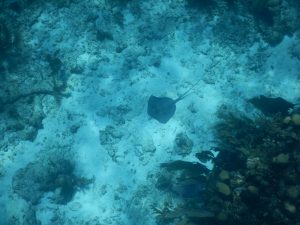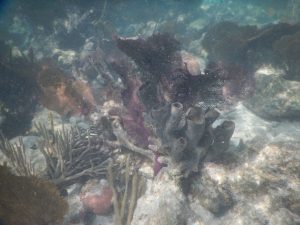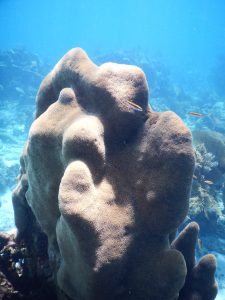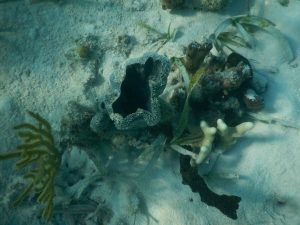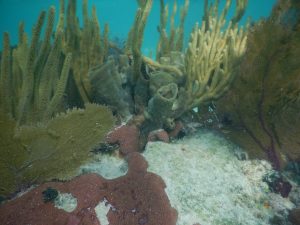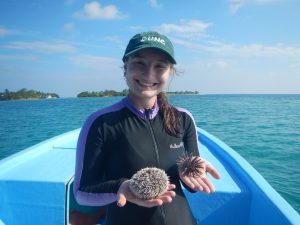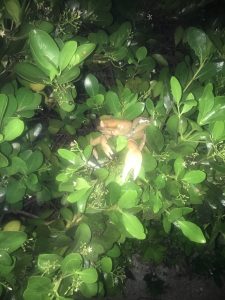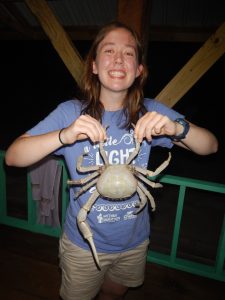Today was the day I really fell in love with the coral reefs. They were nice before, and the fish interesting and the many little things I couldn’t identify mysterious in a charming way. But I felt alien and vaguely invasive. I definitely didn’t belong, and all the fish could tell. (Also apparently I’m allergic to my own snorkel so that wasn’t a great invitation either).
Today we didn’t go out on the boat. We headed to the shore of our little island and waded into the sea. The water was burning, heated by the sun and the decomposition of leaf litter in the shallow water. But we kept wading through, the water cooled, and the murky seaweed gave way to corals and fish.
I swam with Javier and Rose (our water safety officers) for a bit, and we saw a porcupine fish, a huge black thing with piercing brown eyes hiding inside a cave. Rose called it a “big-ass fish,” and I agreed. Scott found a monster lobster, the size of a human torso likely. We also found an octopus, about the size of the palm of my hand, and it was by far the silkiest thing I’ve ever touched. We found a variety of tiny green crabs, molluscs, one small yellow fish, and a ton of green algae.

At some point during this Finding Nemo-like experience, something clicked and I understood. It’s such a different ecosystem from the ones I know and love, but there are similarities—and maybe the foreign-ness is the most beautiful part.
We found a very large variety of green algae to bring back to the lab: Derbesia ousterhoutii, Cladophora prolifera, Caulerpa cupressides, Udotea flabellum, Penicillus lamourouxii, Halimeda increassata, and Rhipocephalus phoenix as some featured examples. I actually love green algae now. It is very charming how much they look like tiny underwater land plants. Rhipocephalus is a pine tree and Udotea a lettuce leaf and Halimeda a little bush. On land, I love plants and flowers and trees, so to see their morphological representation in the marine world is a delight.
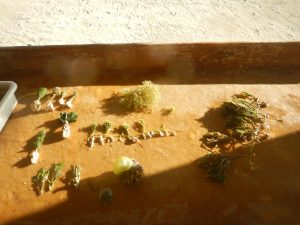
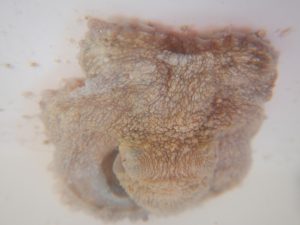

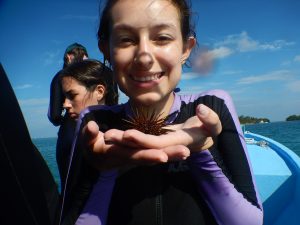
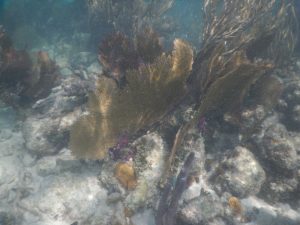

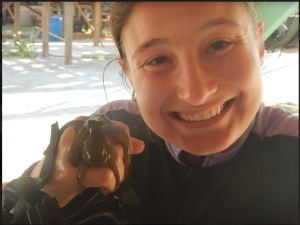
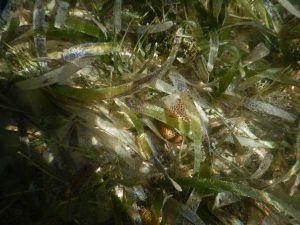
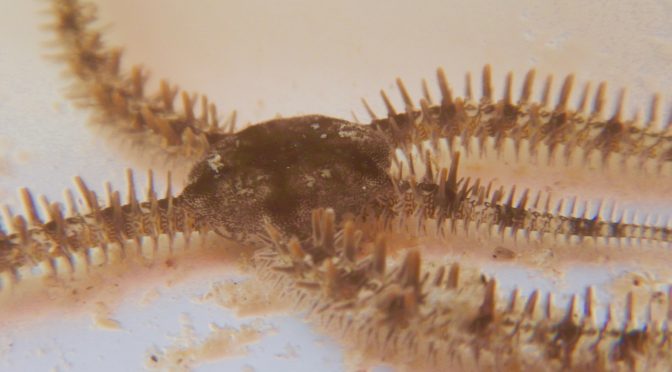
 Spiny ophiocoma brittle star.
Spiny ophiocoma brittle star. Here I am holding the larger of the donkey dung sea cucumbers that we found.
Here I am holding the larger of the donkey dung sea cucumbers that we found. 
